OK, here is a detailed, and more accurate measurement.
The measurement set up looks like this:
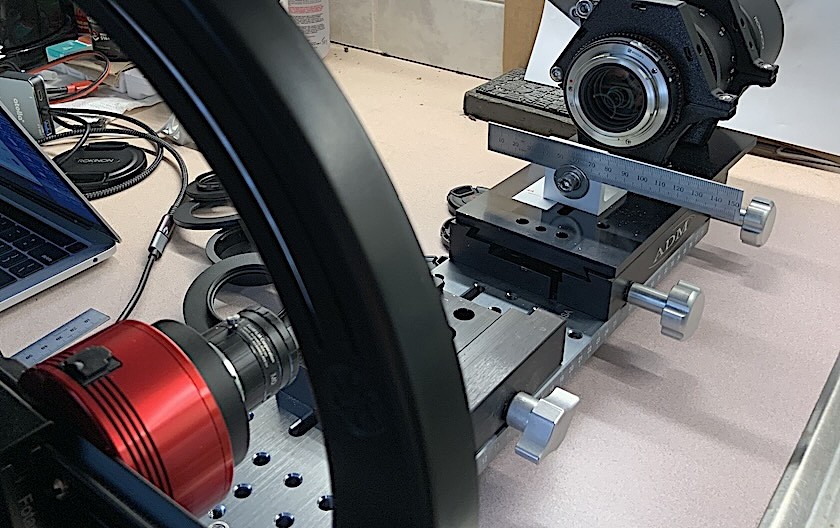
The Rokinon 135mm/T2.2 is at the far end, and we are looking at a Canon EOS flange. A ruler is placed at the focal plane of the lens (44mm from the lens flange).
At the near end, there is a ASI294MM camera with a Fujinon low distortion 16mm lens (HF-16HA). with a ring light around it (to illuminate the ruler).
The camera is mounted on ARCA dovetail plates (ring light not shown) to allow us to center the camera onto the optical axis of the lens.
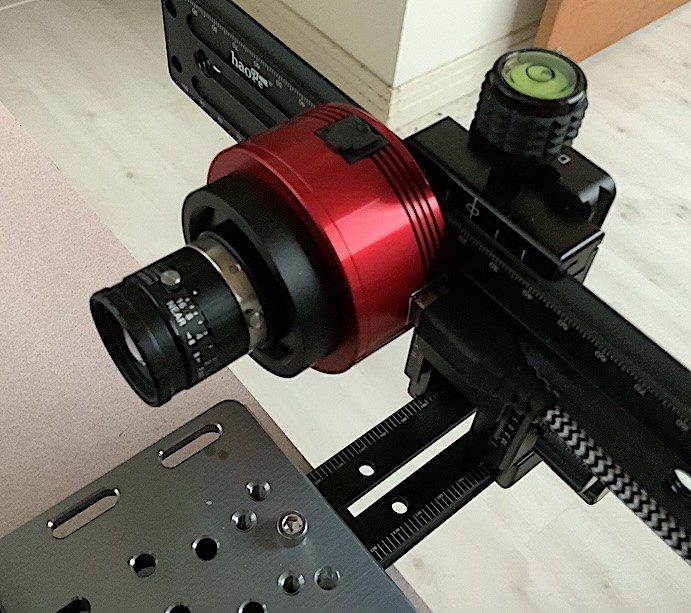
This is what a centered aperture looks like from the Rokinon lens. Notice the red crosshair lines with the vertical line coinciding with the "60mm" marking on the ruler. The Rokinon lens has the lens hood mounted (not an issue, but I will mention it), and the T-stop set to 4.0 (close to f/4.0 on a non-cine lens).
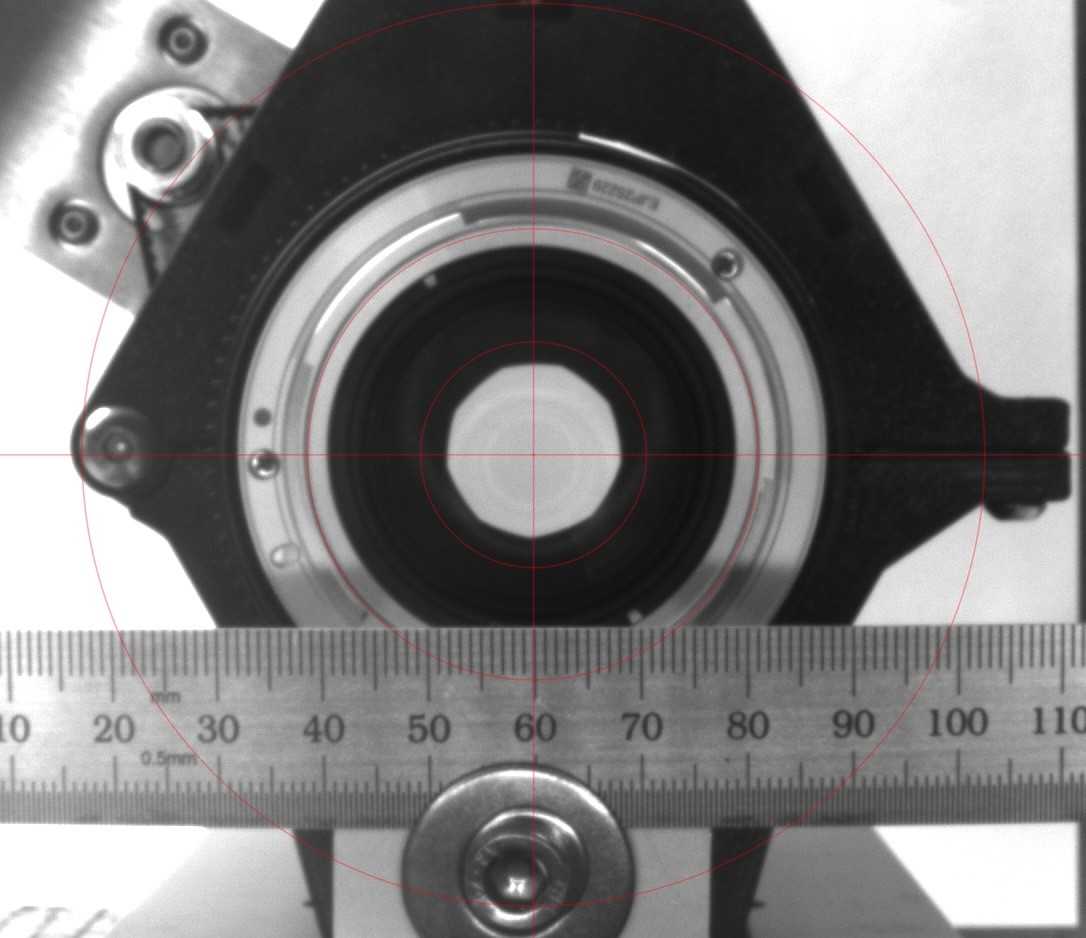
The ASI294MM camera is now moved sideways in this next image, with the crosshair placed at 60mm + 22mm. The 22mm offset at the focal plane corresponds to a 44mm diagonal of a full framed camera.
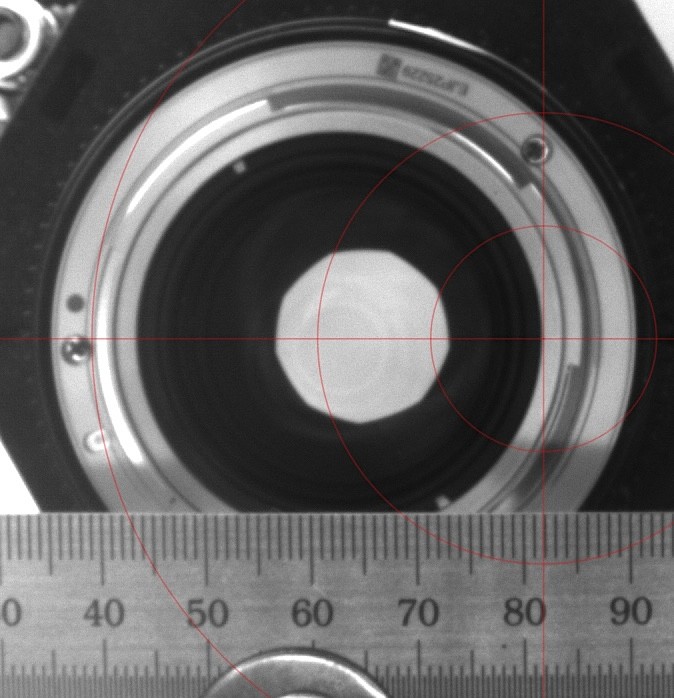
Notice that the shape of the bright aperture remains the same 9-bladed iris, undistorted. There is no aperture vignetting, even at the corner of a full frame camera.
However, star images will show quite pronounced radial spikes (9 spikes + 9 more spikes flipped, for a total of 18 spikes).
The lens is next set to its full opening (T/2.2), and a circular aperture mask is placed in front of the lens. The mask is made up of a 77mm-55mm step-down ring, followed by a 55mm-37mm step-down, to create a composite 77mm-37mm step-down ring. A 37mm Tiffen UV filter, with its UV glass removed is place on the step-down ring, creating a clean circular aperture of 33.7mm, equivalent to an f/4.0 aperture of a 135mm lens.
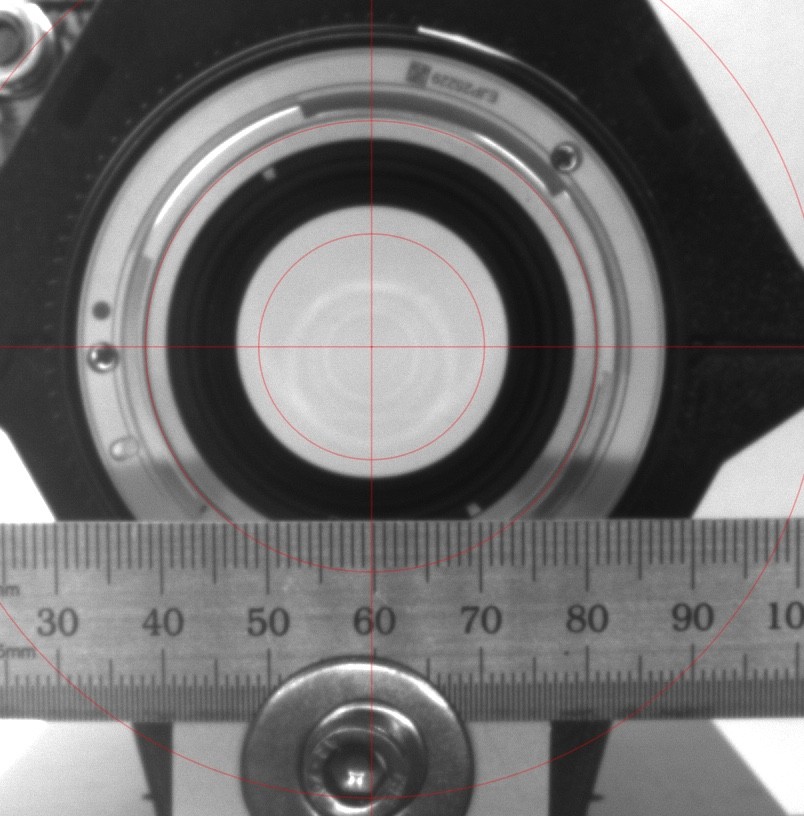
Notice the aperture is completely round, instead of looking like a regular 9-sided polygon. This should produce stars that are void of radial diffraction spikes, at least for a star near the optical axis.
Next, we move the camera so that it is centered at the "70mm" mark on the ruler. A star that is 10mm away from the optical axis, will be seeing this following aperture:
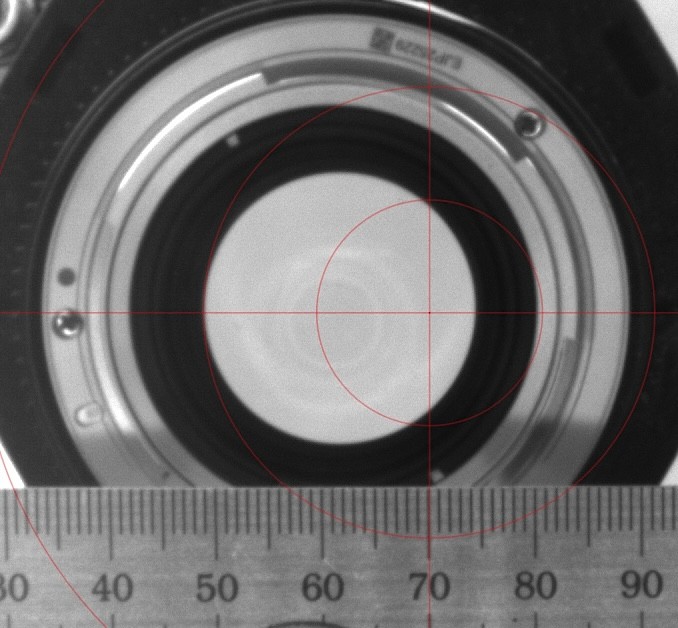
Notice that the aperture is still completely circular, but simply displaced. The star will suffer from other lens aberrations, but it is no aperture vignetting.
We now place the crosshair at 14mm -- this corresponds to a star that is 14mm away from the optical axis on the focal plane, i.e., a star that is at a corner of a APS-C frame that has 28mm diagonal.
Notice that there is some slight non-circular irregularity on the left side of the circular disc.
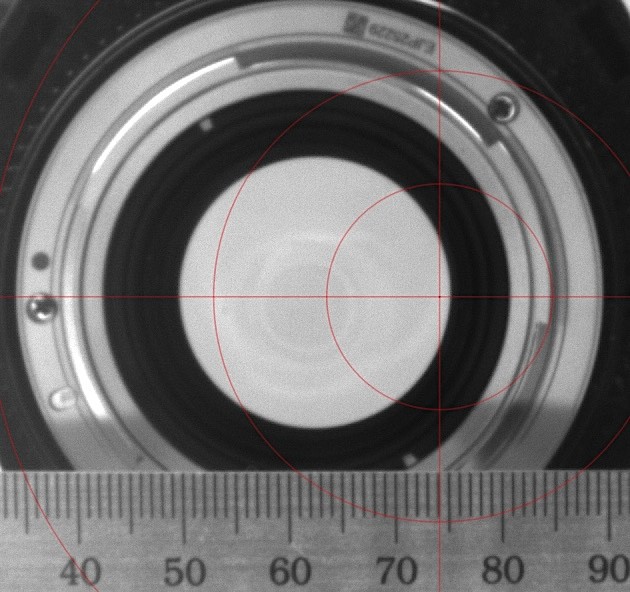
A star at the corner of an APS-C frame will suffer from a slight (very slight) amount of aperture vignetting. This will create two notches in the PSF around a bright star, as discussed here:
https://www.cloudynights.com/topic/547028-anyone-know-what-causes-this-artifact-on-bright-stars/
We now move to the corner of a full frame camera with 44mm diagonals (i.e., 22mm away from the optical axis):
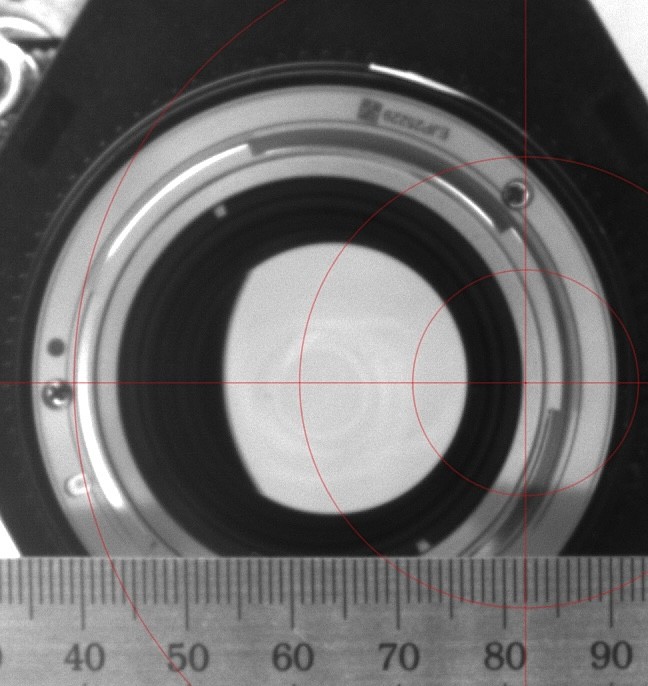
There is now severe aperture vignetting.
What this implies is that a 33.7mm circular mask that is placed just in from of the Rokinon lens will probably be usable for APS-C cameras, but bright stars towards the edges of a full frame camera will show the diffraction notches.
Interestingly, a larger mask will show less aperture vignetting! This is an aperture that is made from a Tiffen 55mm filter (with its glass removed), from the same 22mm away:
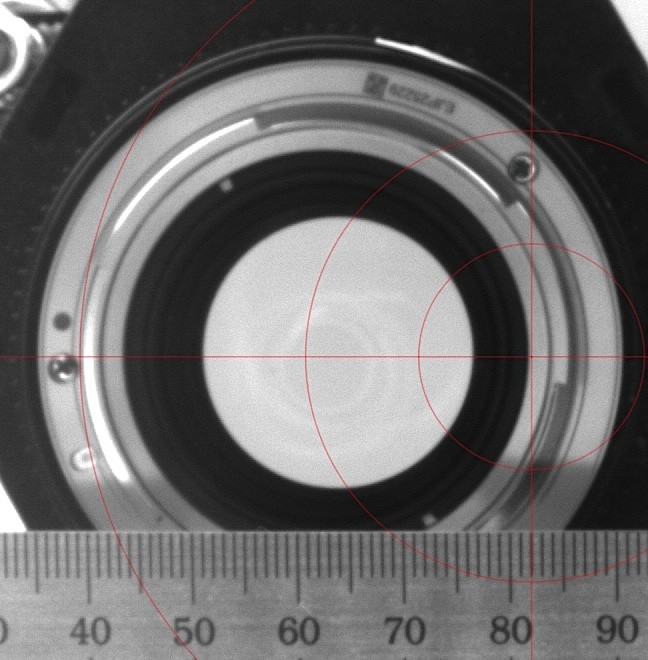
The Tiffen 52mm filter with the glass removed has a clear aperture of 49.7mm. Producing a f/2.8 aperture for the 135mm focal length.
The above appears to imply that for APS-C camera can at most be masked to an f/4.0 on this lens (and there may be a slight, perhaps not really visible except on the brightest stars, aperture vignetting at the far corners). But when masked to look like an f/2.7, the stars are void of aperture vignetting all the way to the corners of a full frame camera.
The next image is from a 46mm UV filter with the glass removed, producing an f/3.3. Offset of 22mm (corner of full frame camera), so it may be possible to mask the lens down to a smaller f/3.3, and not suffer aperture vignettng even on a full frame camera.
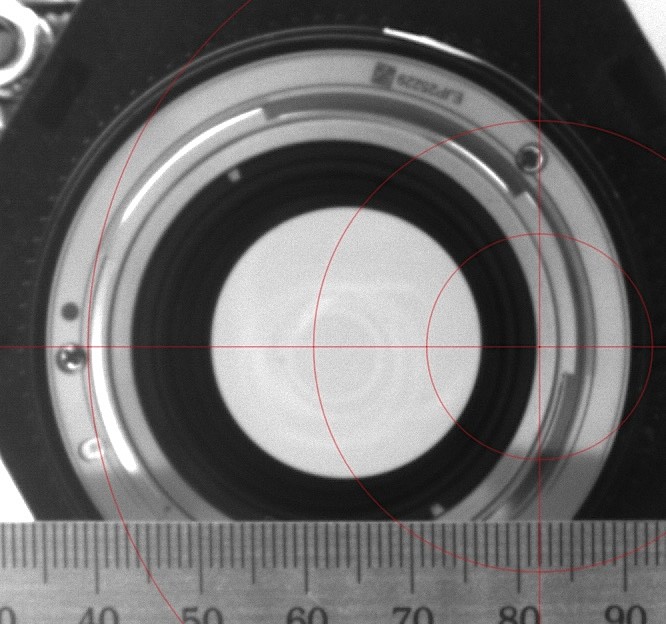
Chen